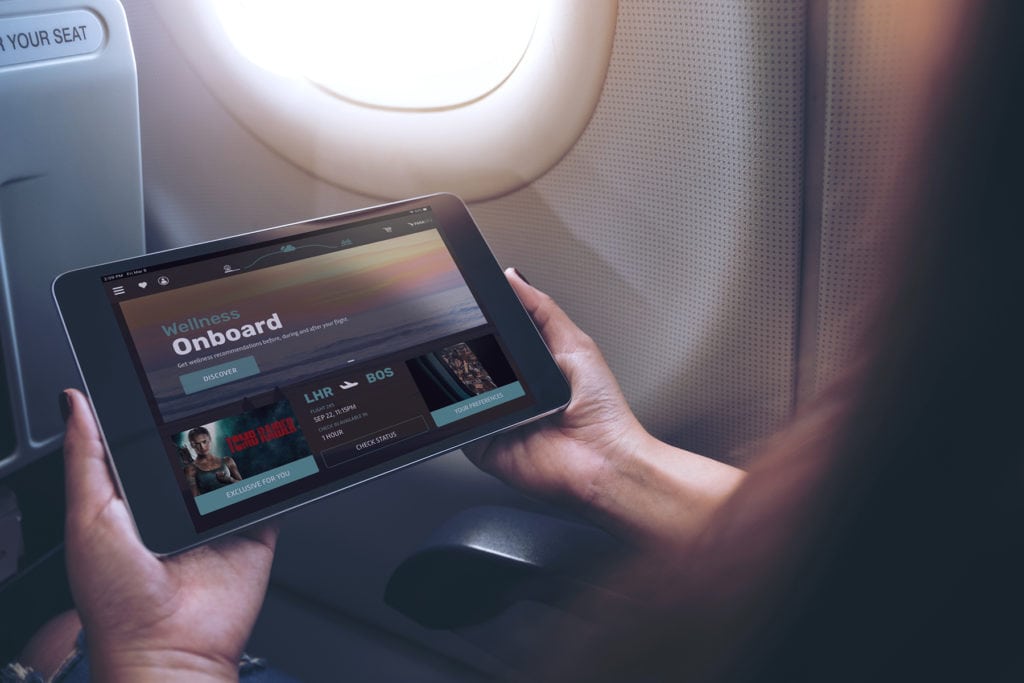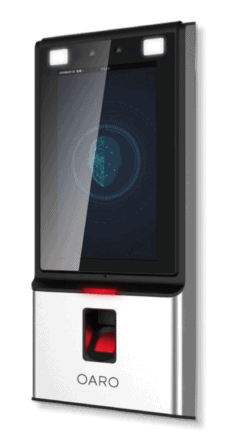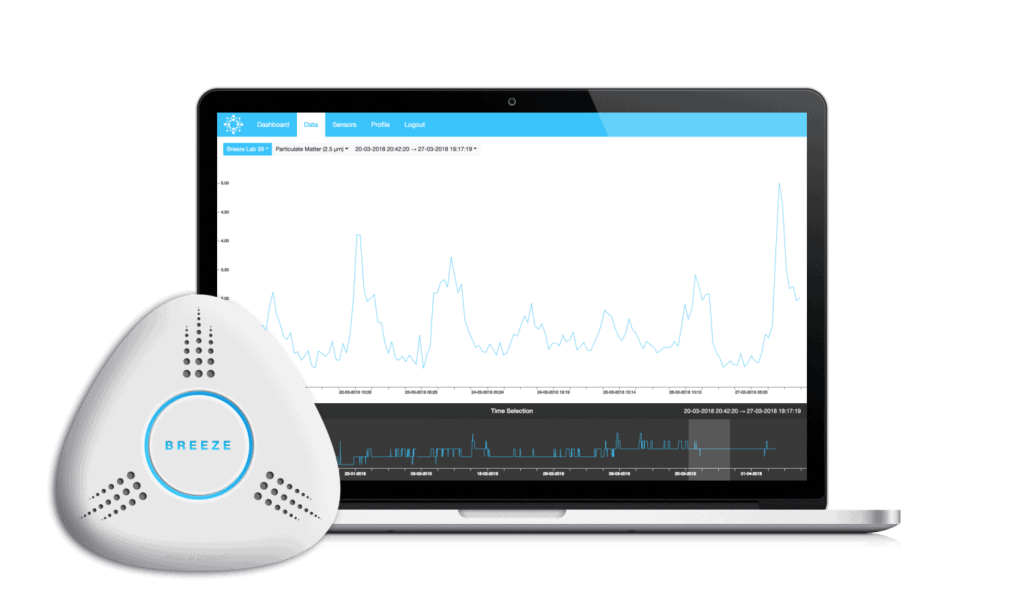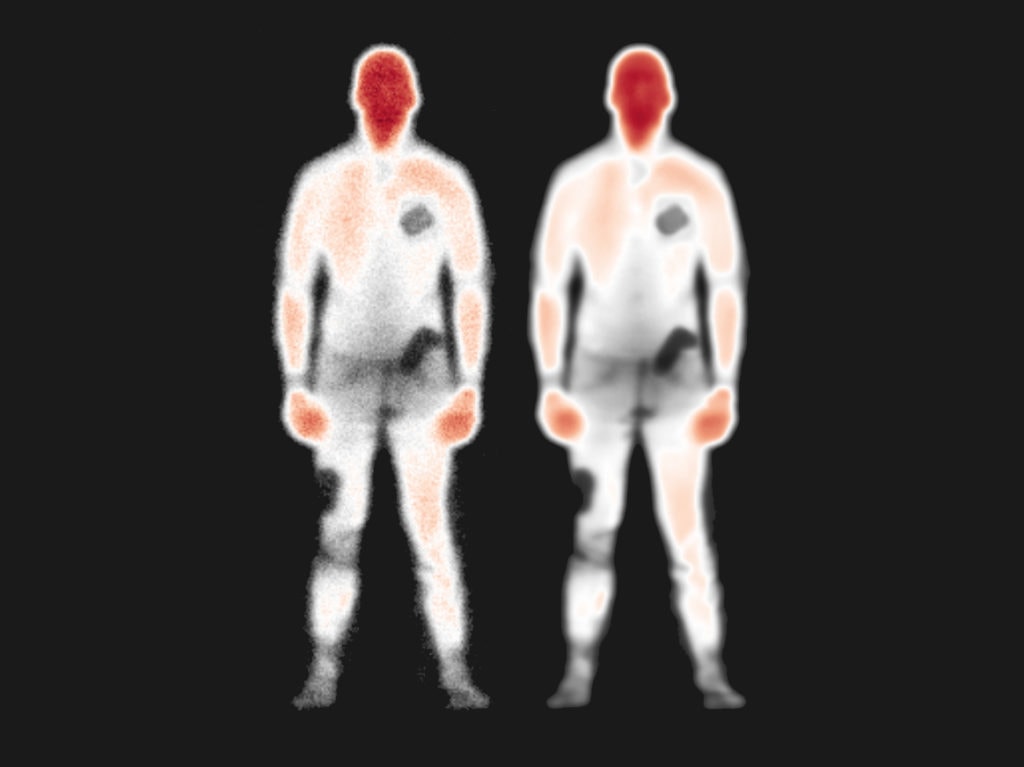Checking in With the Next-Gen at FTE’s Trailblazer Showcase
Share

The FTE Trailblazer Showcase highlights some of the aviation industry’s most forward-looking companies. Here is an overview of how five of the winning entries are developing ideas to aid in the recovery from COVID-19 in the short-, medium- and long-term. This article originally appeared in the Expo Daily Experience: Preview. Read the full issue and register for FTE APEX Virtual Expo.
Welcome Approach
How do you restore passenger confidence in air travel? For Panasonic Avionics Corporation, it’s about touching less and caring more. The company’s Welcome Aboard solutions suite does both.
With the Companion app, passengers can use their personal electronic devices (PEDs) to control their seatback entertainment systems. Airlines can also integrate PEDs into the in-flight entertainment experience via their mobile applications.

To ensure traveler wellbeing, the company has developed the nanoe Air Cleanser, an air purification module that uses hydroxyl radicals to stave off bacteria and doubles as a personalized AI-driven flight planner on when to eat, sleep and how to relax during a flight.
Blockchain-Based Identification

With more data than ever flowing through different parts of the passenger journey, finding ways to protect personal digital information is paramount. OARO’s facial recognition and authentication solution, OARO Identity, uses blockchain to safeguard data, putting user privacy first, says Mike Maxwell, senior vice-president, Digital Security Solutions.
To enroll, the user takes a video selfie and OARO uses it to create a unique, encrypted and anonymized digital identity on the blockchain. Once enrolled, the user can authenticate their identity by snapping a picture from any device, which is cross-referenced against all copies in the blockchain in real time. If the system detects an anomaly, the ID is flagged as illegitimate.
While blockchain has been a hot topic across the aviation industry for the past few years, Maxwell argues that it “needs to be part of a broader solution to bring true business value,” and believes his company has “that magic combination that sets [it] apart in the digital identity space.”
OARO’s facial recognition solution is already being used by staff at two airports to gain access to secure areas, but it hopes to begin public passenger trials in the new year, Maxwell adds.
Dominating Over Disruptions
Following the demise of WOW air, the Icelandic low-cost carrier’s former chief information officer Sveinn Akerlie launched AviLabs and set out to develop a better way for airlines to handle passenger disruptions.
Plan3 is an automated end-to-end disruption management tool that offers an operational overview of the fleet, the ability to communicate with passengers and provide them with alternate travel options, and a method for dealing with compensation claims.
“Poorly managed disruptions are the number one reason for passengers choosing not to fly with an airline,” says Akerlie. “With our product, a single employee can manage thousands of passengers within minutes and passengers will be able to select the options to fit them best,” he explains. “We are in the testing phase with two airline partners and in a dialogue with six carriers, two of which are Tier 1. In January, Plan3 will go live with its first customer, and we have the capacity to add five to ten airlines before summer 2021.”
Easy Breezy Aircraft Cabins

Breeze Technologies co-founder and CEO Robert Heinecke thinks the company’s air quality sensors are tailor-made for the aircraft cabin. Though it recently launched a coronavirus prevention solution for building managers that can be used at airports, it is vying to get them up in the air as well.
“For coronavirus spread risk detection, we mainly look at carbon dioxide (CO2) and volatile organic compound (VOC) concentrations in the air. Our sensors can measure a lot more, like nitrogen dioxide and carbon monoxide, which are interesting parameters with regards to the fume and smell event detection.”
In other words, the sensors could help reassure passengers that the air inside the cabin is clean.
“We aim to make this ‘the new normal’ in the travel industry, for instance by implementing a new seal or certification for aircraft cabins that have continuously monitored air quality,” Heinecke says. “This information should be … presented in an understandable way, and this is where we come in.”
Seamless Security
Airport security processes have long been a pain-point for passengers, but Sequestim, a joint venture between Cardiff University and QMC Instruments Ltd., hopes to remedy this with walk-through security scanners that use next-generation Terahertz imaging technology.
Terahertz imaging displays body heat as a light source, while hidden items show up as shadows. Furthermore, machine learning enables Sequestim’s scanners to distinguish threats from ordinary objects, such as mobile phones, and can raise an alarm automatically, eliminating the need for the scanners to be constantly manned.
“Our solution allows passengers to be screened walking normally past a checkpoint. A single Sequestim scanner will process more than 1000 passengers every hour,” says Ken Wood, the company’s director of Sales and Marketing. He confirmed that Sequestim is set to carry out final development work at London’s Gatwick Airport next year to be ready for market in 2022.

Virtual Expo Connection – Event Agenda
Find all the companies featured in the Trailblazer Showcase in the onDemand Speaker Zone: Startups & Future Inspiration.


